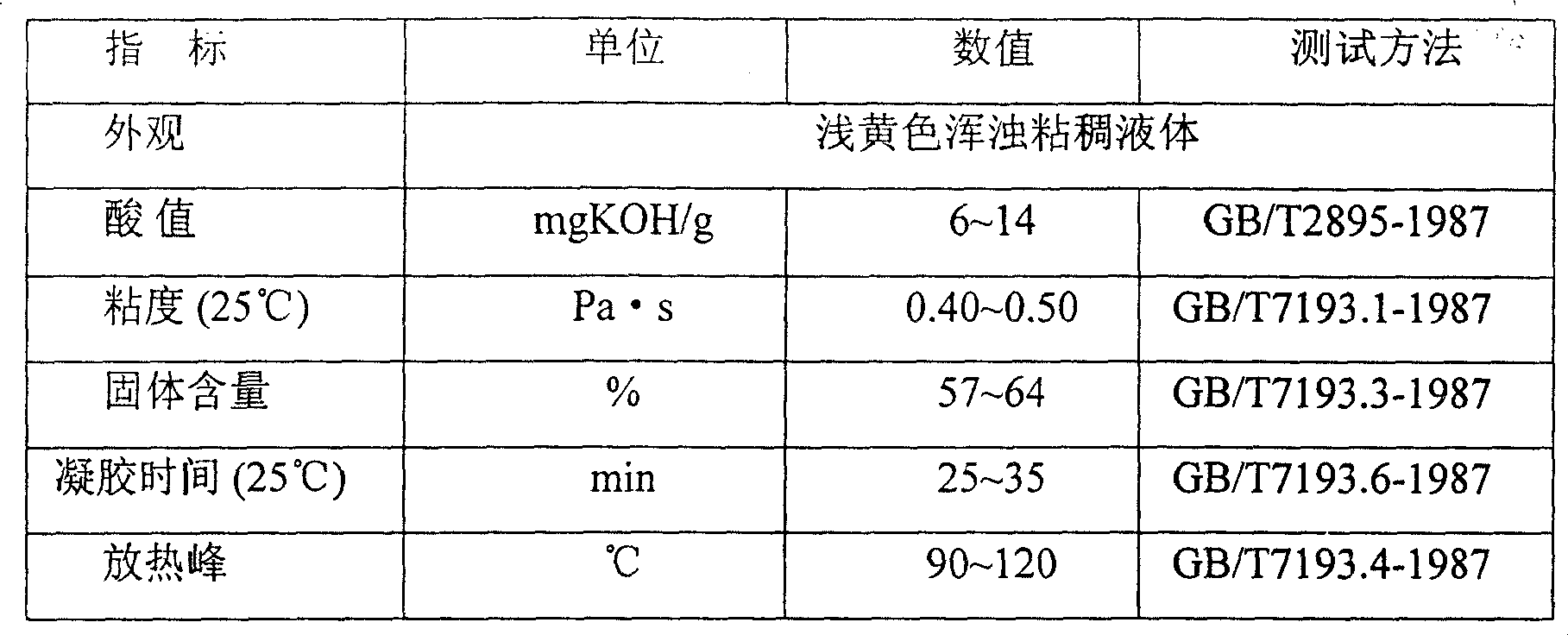Technique for synthesizing resin of epoxy vinyl ester with low exothermal peak
A technology of epoxy vinyl ester and synthesis process, applied in the field of macromolecular polymers, can solve problems such as easy cracking of products, and achieve the effects of good wettability, high toughness and good mechanical properties
- Summary
- Abstract
- Description
- Claims
- Application Information
AI Technical Summary
Problems solved by technology
Method used
Image
Examples
Embodiment 1
[0024] 340 g of bisphenol A type epoxy resin, 65 g of methacrylic acid, 0.8 g of benzyl dimethylamine, and 0.15 g of resorcinol are charged into the reactor with high epoxy equivalent. The temperature was gradually raised to 130° C. under the condition of feeding nitrogen, and the temperature was maintained after the reaction system became uniform and transparent until the measured acid value was less than 30 mgKOH / g. Cool down to below 110°C and add 260g of styrene, stir well, when the temperature drops below 70°C, add 0.1g of 4-tert-butylphenol, stir well, finally cool to room temperature, filter to obtain light yellow viscous liquid.
Embodiment 2
[0026] Add 340g of high epoxy equivalent bisphenol A epoxy resin (epoxy equivalent of 455-556g / mol), 50g of acrylic acid, 0.38g of benzyltrimethylammonium chloride, and 0.07g of methylhydroquinone In the device shown in 1, the temperature is gradually raised to 120°C under the condition of feeding nitrogen gas, and the temperature is maintained after the reaction system becomes uniform and transparent until the acid value is less than 30mgKOH / g. Cool down to below 110°C, add 160g of styrene and 80g of divinylbenzene, stir well, when the temperature drops below 70°C, add 0.30g of 2,4,6-tri-tert-butylphenol, stir well, finally cool to room temperature, and filter A light yellow viscous liquid was obtained.
Embodiment 3
[0028] 340g of bisphenol A type epoxy resin with high epoxy equivalent (epoxy equivalent is 714~833g / mol), 38g of methacrylic acid, 1.6g of benzyl triethyl ammonium chloride, 0.20 of tert-butylhydroquinone g is dropped into the device shown in Example 1, and the temperature is gradually raised to 160°C under the nitrogen gas situation, and the temperature is maintained after the reaction system becomes uniform and transparent until the acid value is less than 30mgKOH / g. Cool down to below 110°C, add 190g of styrene and 100g of methyl methacrylate, stir well, when the temperature drops below 70°C, add 0.15g of 2,6-di-tert-butyl-p-cresol, stir well, and finally cool to room temperature, Filter to obtain light yellow turbid viscous liquid.
PUM
| Property | Measurement | Unit |
|---|---|---|
| acid value | aaaaa | aaaaa |
Abstract
Description
Claims
Application Information
 Login to View More
Login to View More - R&D
- Intellectual Property
- Life Sciences
- Materials
- Tech Scout
- Unparalleled Data Quality
- Higher Quality Content
- 60% Fewer Hallucinations
Browse by: Latest US Patents, China's latest patents, Technical Efficacy Thesaurus, Application Domain, Technology Topic, Popular Technical Reports.
© 2025 PatSnap. All rights reserved.Legal|Privacy policy|Modern Slavery Act Transparency Statement|Sitemap|About US| Contact US: help@patsnap.com

